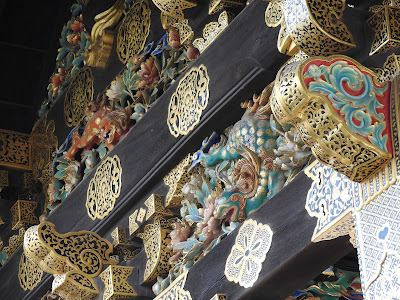Nijo castle
contains two palaces within its walls. The first was the palace of the shoguns throughout their reign (then taken over by the Emperor after the Meiji restoration). We visited on a hot, sunny day: a welcome change from two days of rain.
No pictures were allowed inside, so words will have to do. It was a business-like place, and the business was to impress visitors (daimyo lords and representatives of the emperor) with the power and status of the shogun. The walls were adorned with paintings of powerful beasts (tigers, dragons, leopards, falcons) and mighty pine trees. These were not the familiar watercolors: the images leapt out from a background of gold leaf. The private rooms of the shogun were decorated more serenely. We walked on "nightingale floors", which creaked as a warning of unwelcome intruders.
Here are pictures of the exterior, and grounds:
The second palace is the only remaining used exclusively by emperors. It wasn't open:
Later that evening we rode the bullet train back to Tokyo.
Today we're scheduled to fly back to the US. It has been a wonderful trip, and a wonderful introduction to Japan. We're grateful for the kindness of so many Japanese, particularly the Kan family.






























































